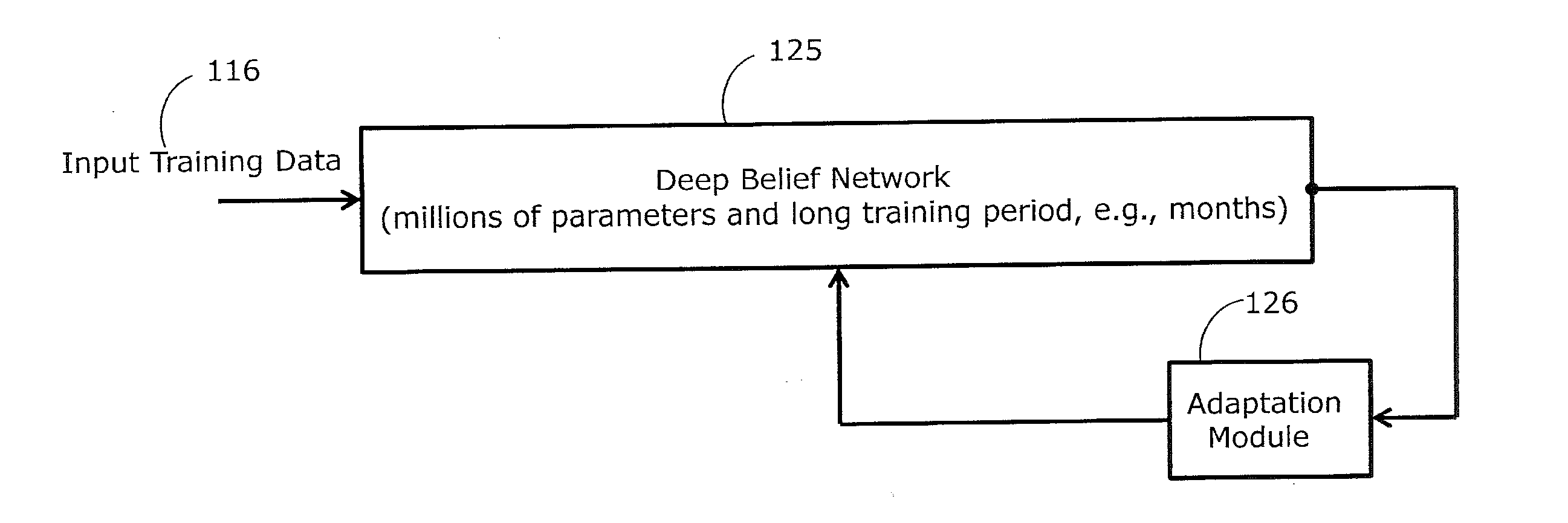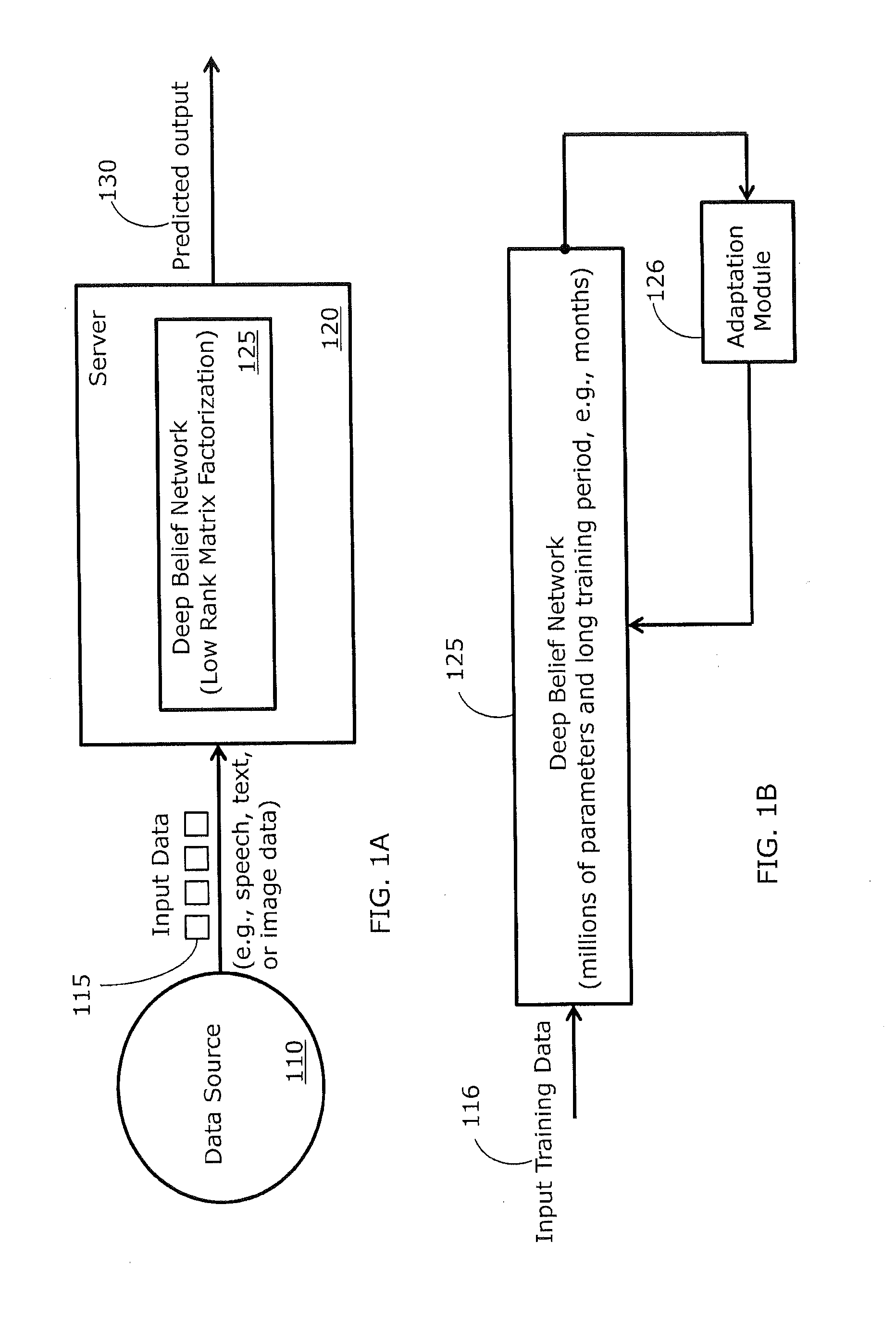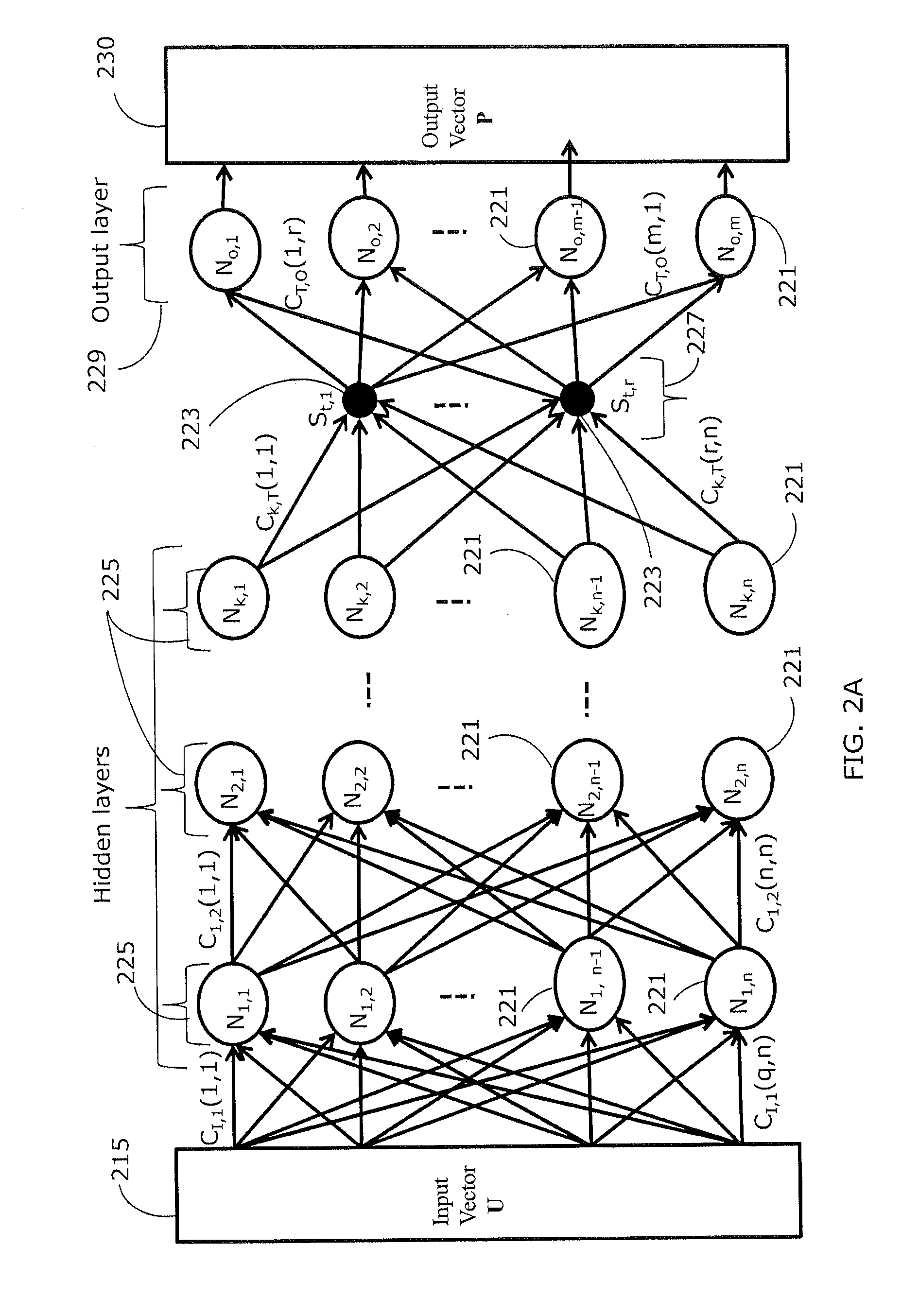Method and Apparatus of Processing Data Using Deep Belief Networks Employing Low-Rank Matrix Factorization
a technology of deep belief network and method, applied in the direction of electric/magnetic computing, instruments, computing models, etc., can solve the problems of high computational complexity of artificial neural networks used in such applications
- Summary
- Abstract
- Description
- Claims
- Application Information
AI Technical Summary
Benefits of technology
Problems solved by technology
Method used
Image
Examples
Embodiment Construction
[0016]A description of example embodiments of the invention follows.
[0017]Artificial neural networks are commonly used in modeling systems or data patterns adaptively. Specifically, complex systems or data patterns characterized by complex relationships between inputs and outputs are modeled through artificial neural networks. An artificial neural network includes a set of interconnected nodes. Inter-connections between nodes represent weighting coefficients used for weighting flow between nodes. At each node, an activation function is applied to corresponding weighted inputs. An activation function is typically a non-linear function. Examples of activation functions include log-sigmoid functions or other types of functions known in the art.
[0018]Deep belief networks are neural networks that have many layers and are usually pre-trained. During a learning phase, weighting coefficients are updated based at least in part on training data. After the training phase, the trained artificia...
PUM
 Login to View More
Login to View More Abstract
Description
Claims
Application Information
 Login to View More
Login to View More - R&D
- Intellectual Property
- Life Sciences
- Materials
- Tech Scout
- Unparalleled Data Quality
- Higher Quality Content
- 60% Fewer Hallucinations
Browse by: Latest US Patents, China's latest patents, Technical Efficacy Thesaurus, Application Domain, Technology Topic, Popular Technical Reports.
© 2025 PatSnap. All rights reserved.Legal|Privacy policy|Modern Slavery Act Transparency Statement|Sitemap|About US| Contact US: help@patsnap.com



